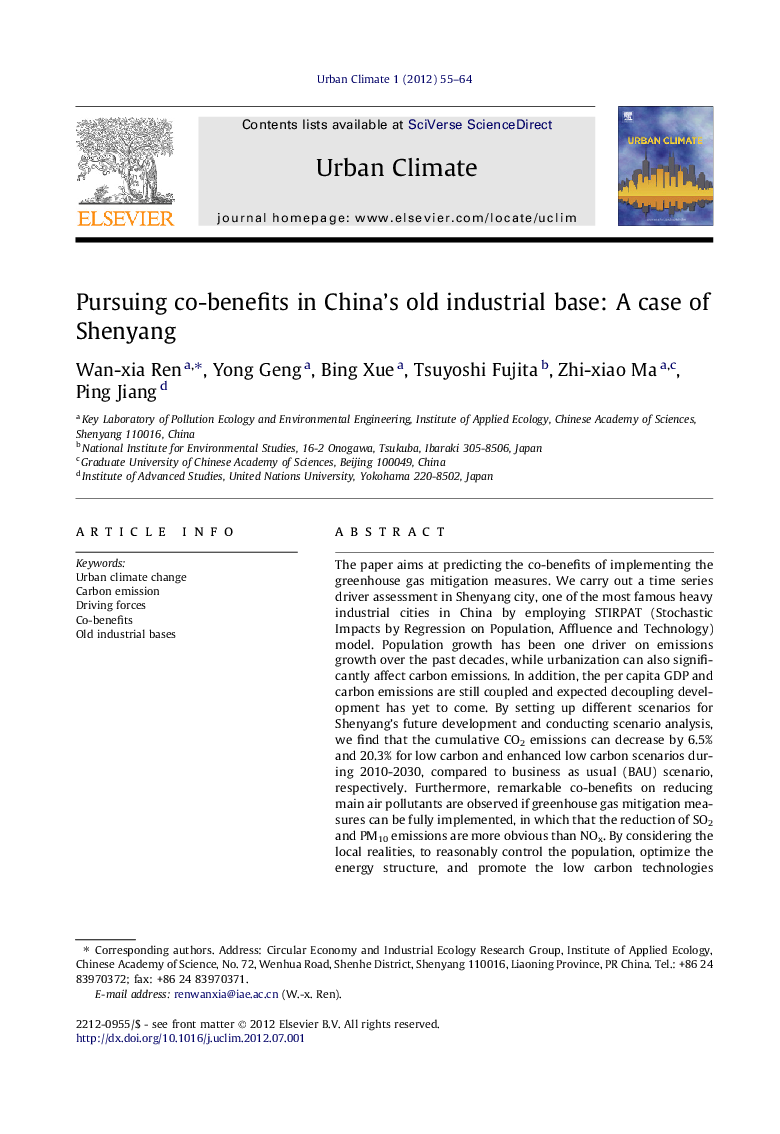| Article ID | Journal | Published Year | Pages | File Type |
|---|---|---|---|---|
| 143812 | Urban Climate | 2012 | 10 Pages |
The paper aims at predicting the co-benefits of implementing the greenhouse gas mitigation measures. We carry out a time series driver assessment in Shenyang city, one of the most famous heavy industrial cities in China by employing STIRPAT (Stochastic Impacts by Regression on Population, Affluence and Technology) model. Population growth has been one driver on emissions growth over the past decades, while urbanization can also significantly affect carbon emissions. In addition, the per capita GDP and carbon emissions are still coupled and expected decoupling development has yet to come. By setting up different scenarios for Shenyang’s future development and conducting scenario analysis, we find that the cumulative CO2 emissions can decrease by 6.5% and 20.3% for low carbon and enhanced low carbon scenarios during 2010-2030, compared to business as usual (BAU) scenario, respectively. Furthermore, remarkable co-benefits on reducing main air pollutants are observed if greenhouse gas mitigation measures can be fully implemented, in which that the reduction of SO2 and PM10 emissions are more obvious than NOx. By considering the local realities, to reasonably control the population, optimize the energy structure, and promote the low carbon technologies could bring co-benefits so that the cities can move toward low carbon development.
